Here’s how to plant an organic backyard garden in one weekend. An easy step-by-step beginner guide to growing your own fresh organic vegetables and herbs.
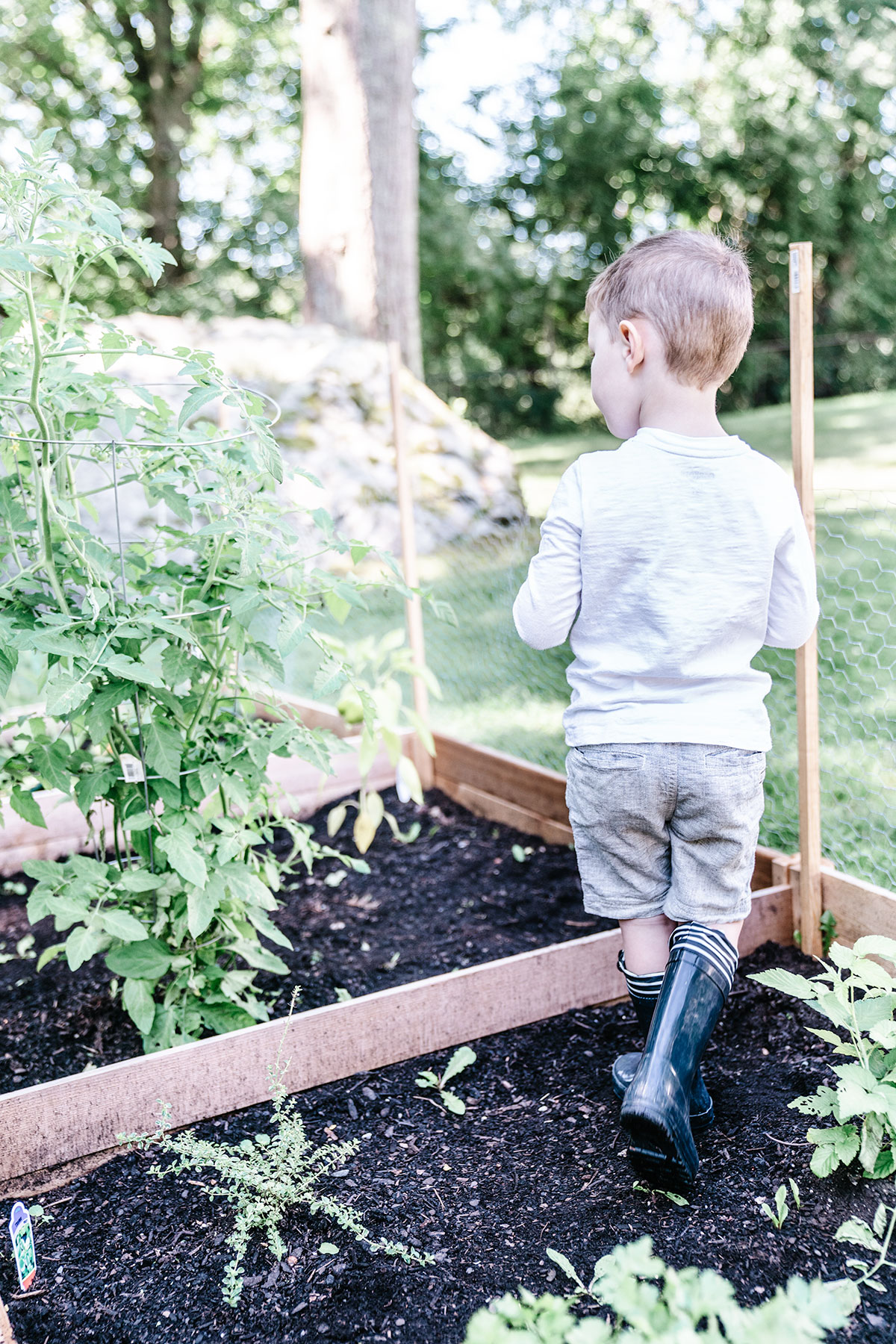
Chris and I have planted two backyard gardens from scratch.
We started as bewildered beginners with our organic garden in our last house. We learned and grew with that garden, which lasted for a few seasons.
Then we moved into our new house, and this summer we planted our first garden in our new backyard.
It was even more special this time around because we had three-year-old Trevor to lend a helping hand.
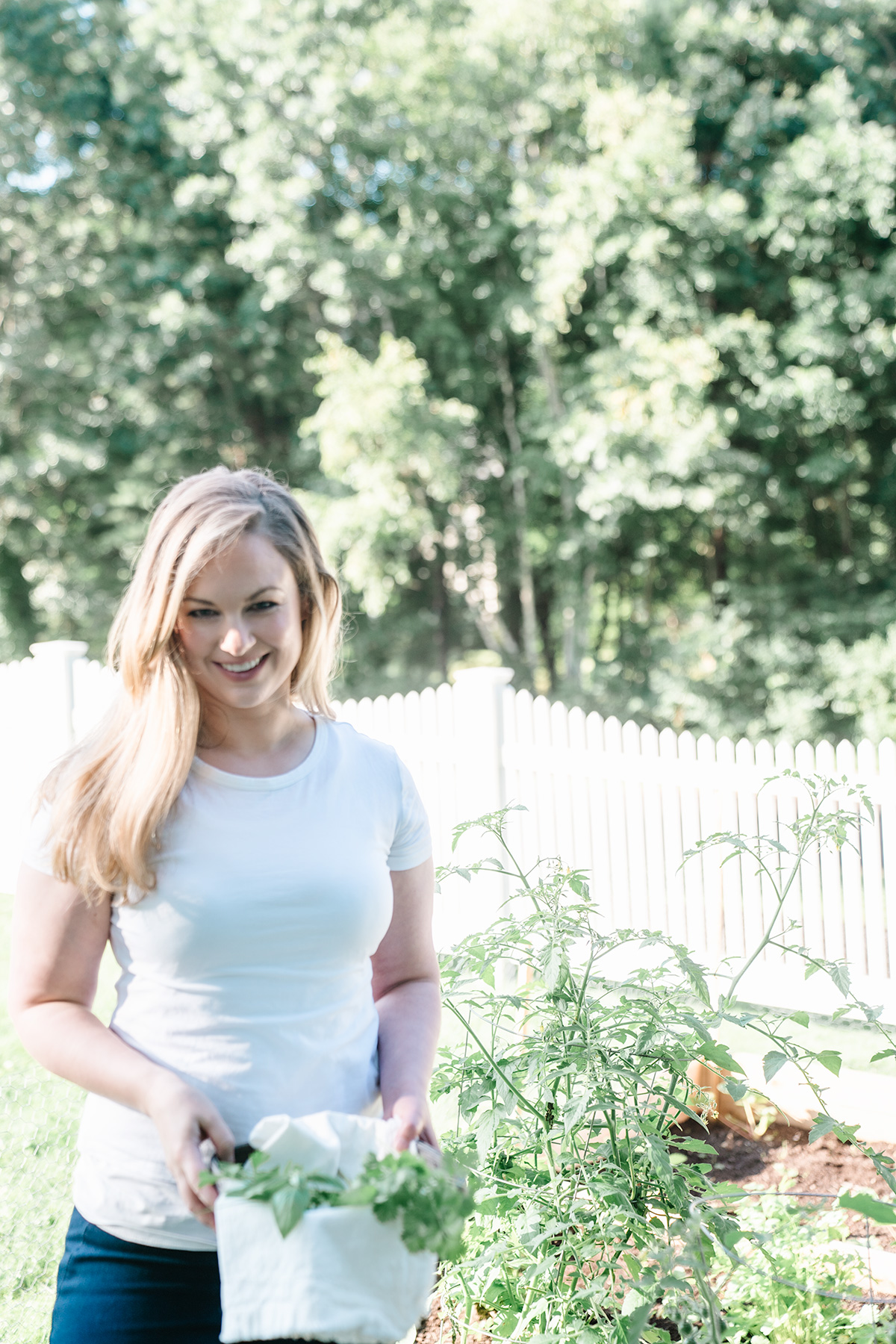
The surprising thing we’ve learned: you can plant a small vegetable garden in your yard in just one weekend.
If you’re thinking about growing a backyard garden but aren’t sure, here are the three things I’d tell you to try to convince you:
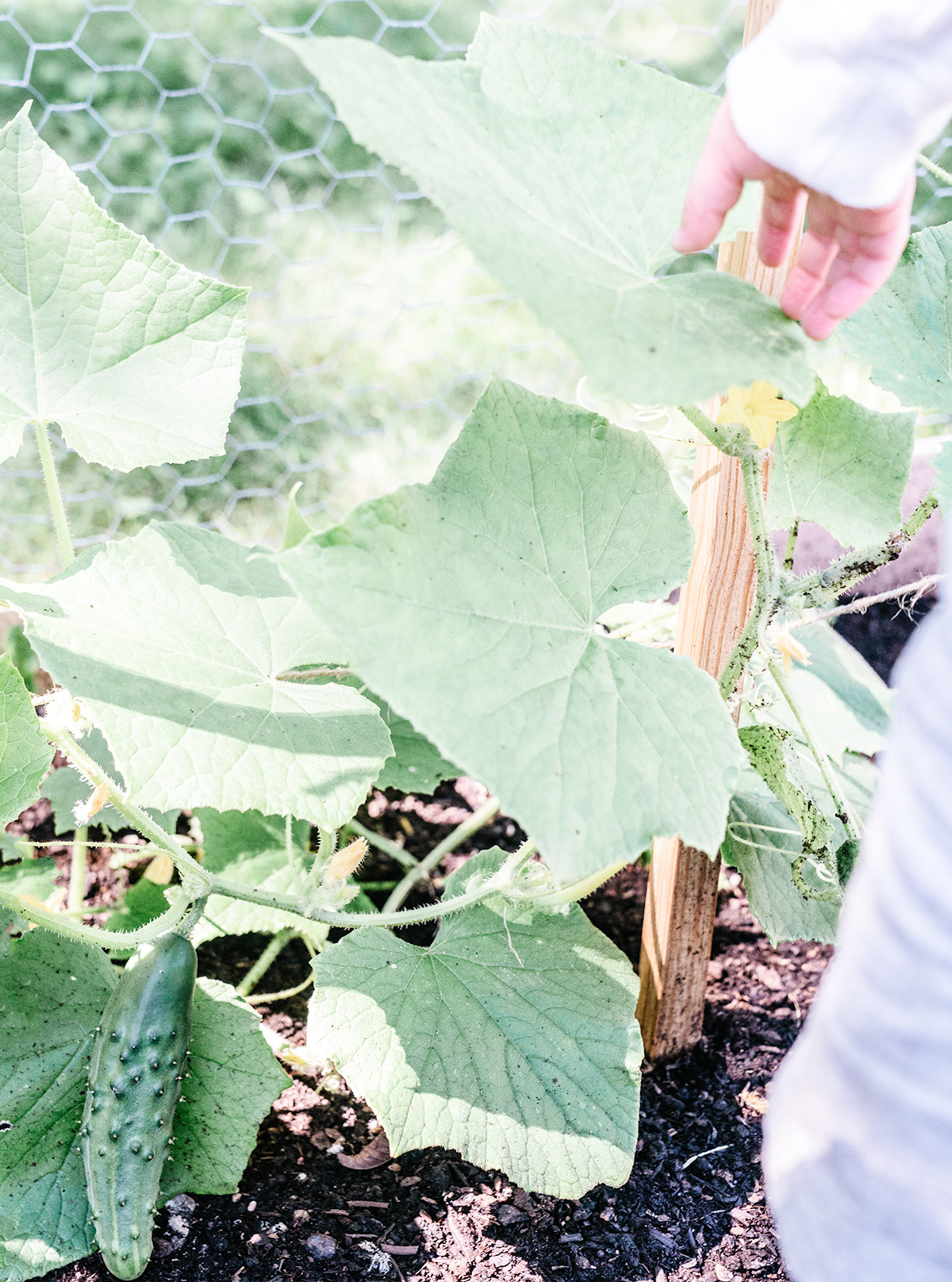
Planting Your First Garden Can Seem Intimidating and Overwhelming, But It’s Actually Very Simple
Count on one weekend where you’ll focus on planting your garden. Know that this weekend will involve some heavy labor. (It helps to have two people for a couple of the steps.) But after that one intensive weekend, you’ll have your own backyard garden that will literally yield fruits (and vegetables and herbs) for the entire season.
Veggies and Herbs Picked Straight From Your Own Backyard Really Do Taste the Best
The juicy tomatoes I’ve picked from my own backyard – so fresh they’re still warm from the sun – are the sweetest and most delicious I’ve ever tasted. And my freshly picked basil and chives are worlds apart from wilted grocery store herbs.
Having Your Own Backyard Garden is Really Rewarding
Yes, you can do this! Before I planted my first garden, I remember questioning whether I could actually grow … anything. But here’s what’s incredible: after you’ve devoted a weekend to planting your organic garden, nature takes care of nearly all of the work. And you won’t believe the rewarding feeling of discovering vegetables growing in your own backyard, seemingly overnight and by magic…
So let’s get started on planting that backyard garden…
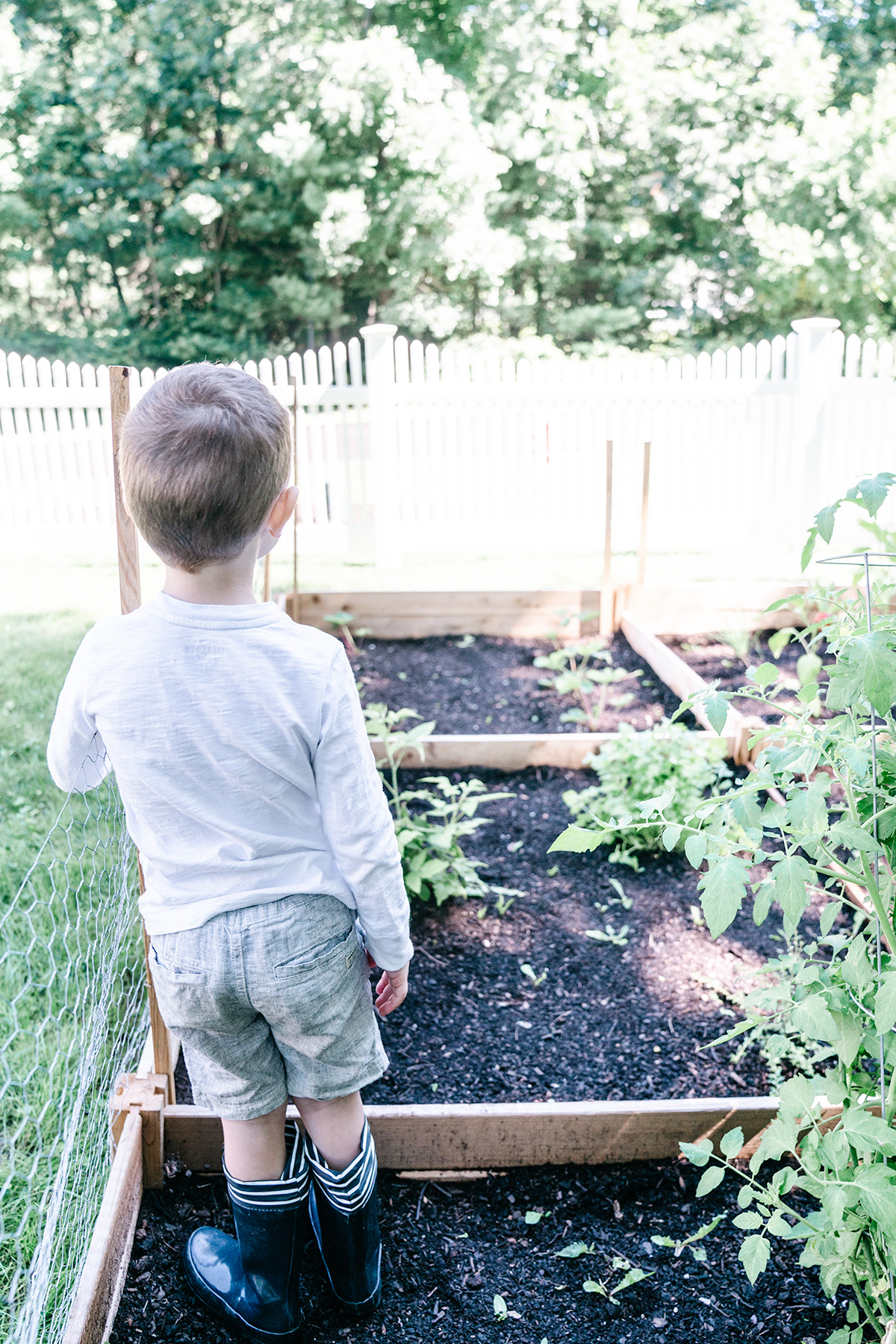
Important Pre-Step: Mapping Your Backyard for Sunlight
I say that you can create your garden in one weekend but there’s one important pre-step to consider: mapping your yard for sun. You’ll want to plant your garden in the section of your backyard that receives the most direct sunlight.
So choose a clear, sunny day prior to your garden planting weekend. Begin during the first full hour of sunlight in the morning and draw a map of your yard, circling every area that receives direct sunlight. Every two hours, inspect your yard again and create a new map that shows all of the areas receiving direct sunlight.
When the sun sets at night, take a look at your maps for the day. You’ll want to look for two things: 1.) an area that is flat (no slopes or hills), and 2.) a spot that also receives several hours of sunlight throughout the day. That’s your winning spot for your first backyard garden!
Note: Ideally, this spot will receive several hours of direct sunlight per day. In our case, we have a very shady backyard that’s filled with big trees. Our garden only receives maybe 5 hours of direct sunlight per day. It’s still doing really well.
I’m trying to emphasize this point since I’ve made mistakes in the past: Choosing the sunniest spot in your yard is a really important step! A strong, healthy garden requires plenty of direct sunlight. And building your raised garden beds and filling them with soil requires some real work. You should only have to do it once, and then your garden will be ready for more planting each spring, year after year. So choose your spot wisely!
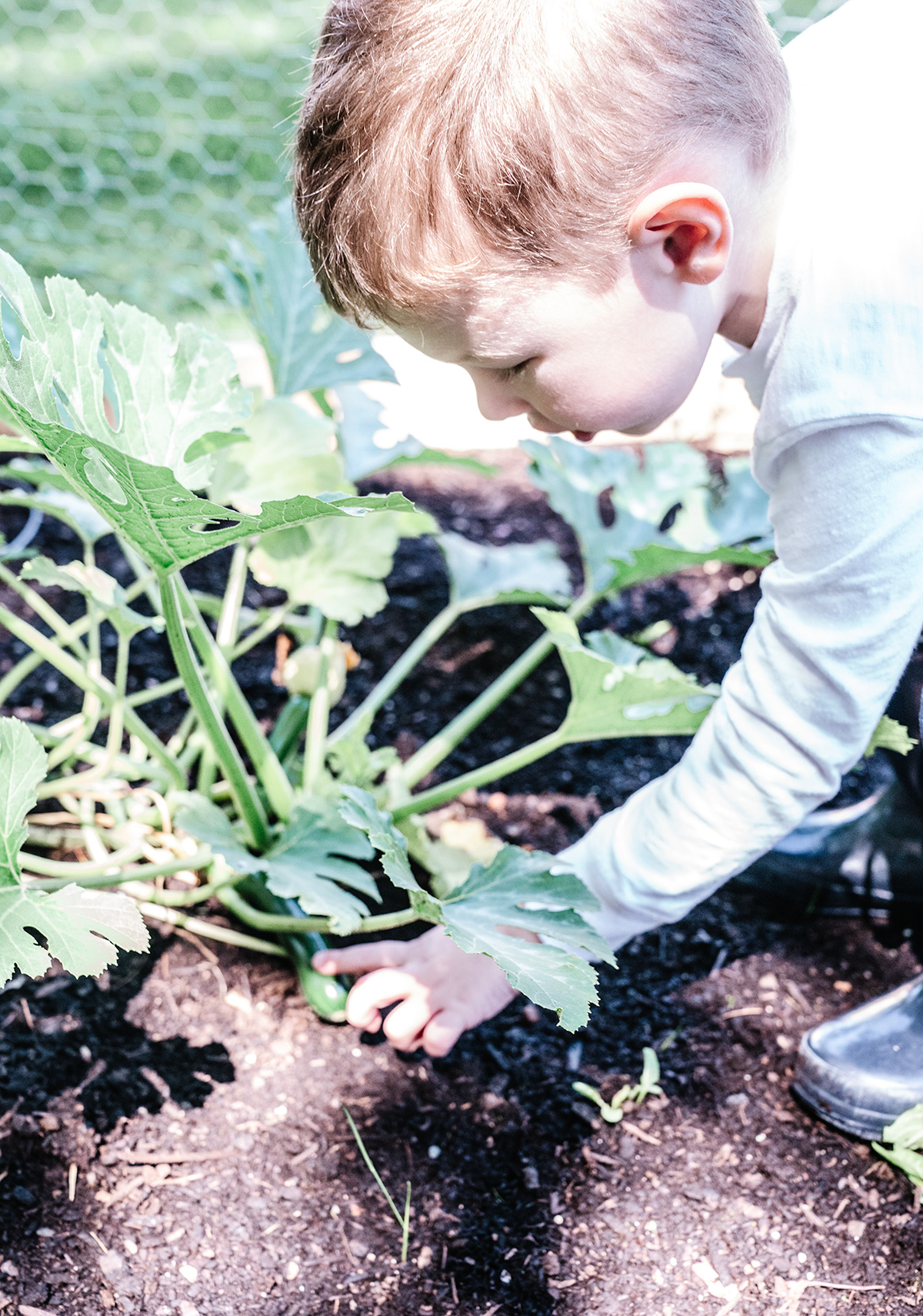
Step 1: Purchase the Garden Supplies You’ll Need
1.) Hand Trowel and Gloves
If you don’t want to get your hands dirty while planting, buy a small hand trowel and garden gloves. Otherwise, use your hands for planting and just wash them thoroughly afterwards.
2.) Garden Hose with Spray Nozzle
Gardens require daily watering. And watering cans = tons of back and forth trips to the water spigot (for anything but the tiniest gardens).
3.) Certified Organic Garden Soil and Compost
Here’s my approach to organic gardening: instead of focusing on ridding your garden of every pest and weed, concentrate on making garden conditions so favorable and supportive that the plants can’t help but thrive. Here’s what happens when plants are really healthy: pests, molds, and weeds won’t be able to stop them from producing big crops.
Whats the key to making your garden thrive? Aside from plenty of sun and regular waterings, the key is really high quality garden soil and compost!
To grow an organic garden, you’ll want to look for a compost and vegetable garden soil that have an organic certification. One really good certification I look for is OMRI. And one brand of organic soil and compost that we’ve found really effective is Coast of Maine.
OMRI-certified organic soils and composts (like the Coast of Maine brand) are definitely expensive. But keep in mind: this is a once-yearly investment for a garden that should last throughout the full growing season (up to five months out of the year). And next year, much of the soil will remain, and you’ll likely need just a few new bags of soil and compost.
Where Can I Find High Quality Organic Compost and Soil?
I’ve had the most luck finding these products at large, local garden centers. Big box stores like Home Depot and Lowe’s don’t often stock these higher quality brands. Try doing a Google search for “Garden Center,” and Google maps will pull up a listing of store options in your area.
4.) Cedar Raised Bed Garden Kit
For the beginner organic gardener, I highly recommend Cedar Raised Bed Kits. Cedar is a natural, untreated material that won’t leach chemicals into your organic garden. Cedar also holds up through rain and winter weather. And the raised bed kits are, hands down, the easiest method of planting that we’ve found.
Cedar kits seemed really expensive to Chris and I when we started our first garden. But here’s the thing we learned: they’re worth the investment. You’ll spend a weekend building your raised beds, but then the beds will last from one growing season to the next.
Where Can I Find Raised Beds?
You should find a selection of cedar raised bed kits in the same garden center where you find your soil and compost. If you’re having any trouble finding cedar kits, you can also buy them online.
What Size Raised Bed Should I Buy?
For beginner gardeners, I’d recommend eight 4-foot-by-4-foot raised beds. This size is small enough for a beginner organic garden, so it won’t cost a fortune or take a full day to build. At the same time, this size allows enough space to plant a good variety of herbs and vegetables.
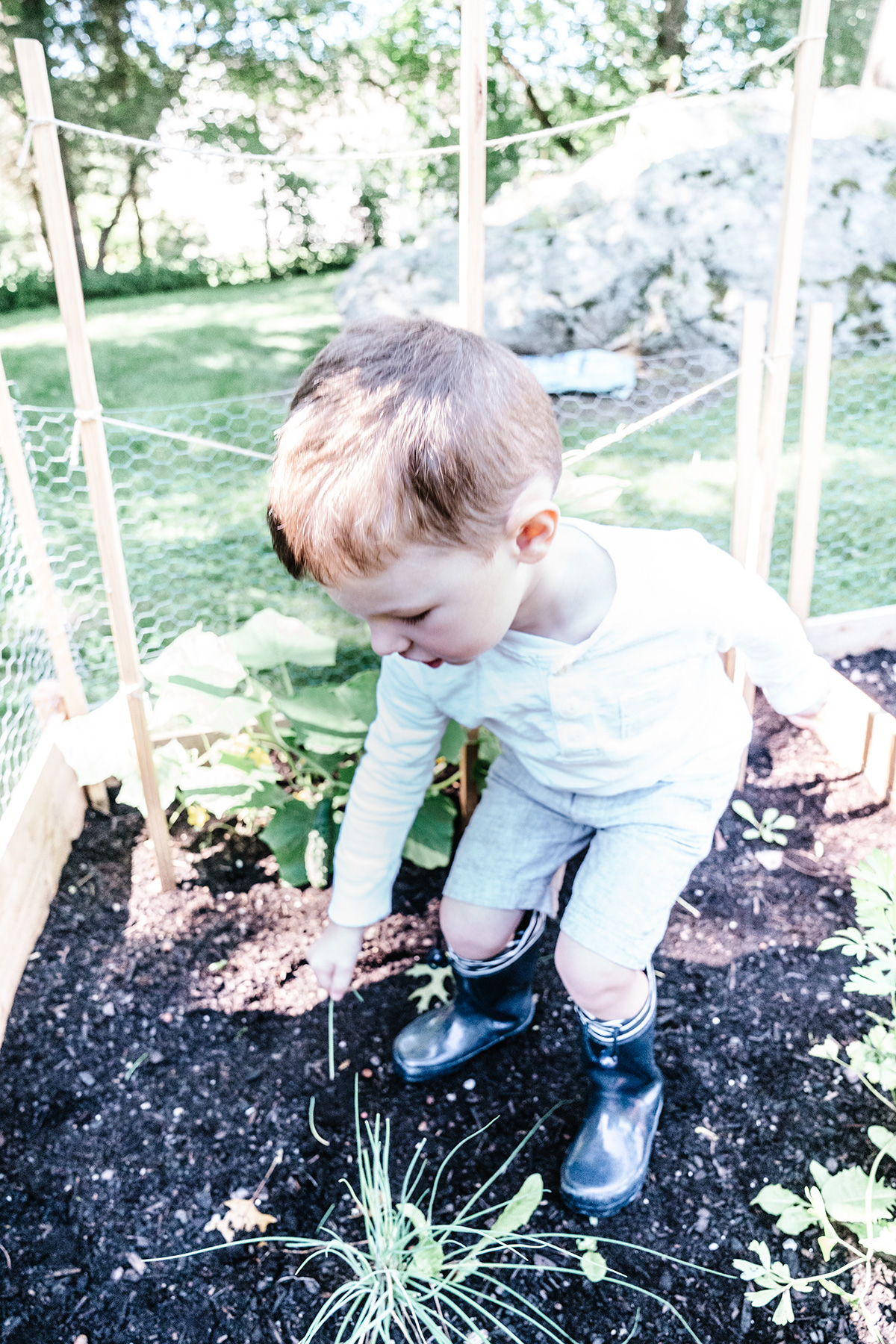
Step 2: Prevent Weeds and Grass from Growing In Your Garden
Now that you have all of your organic gardening materials, it’s time to build that backyard garden!
Begin by laying out several layers of newspaper to completely cover the lawn on your chosen garden location. Make sure newspaper covers every centimeter, so there isn’t any room for grass to grow through. Then grab your garden hose and spray the newspaper until it’s soaked.
This is an important step! Your garden will always have some weeds (and that’s just fine), but this will help to keep them from overtaking your vegetables.
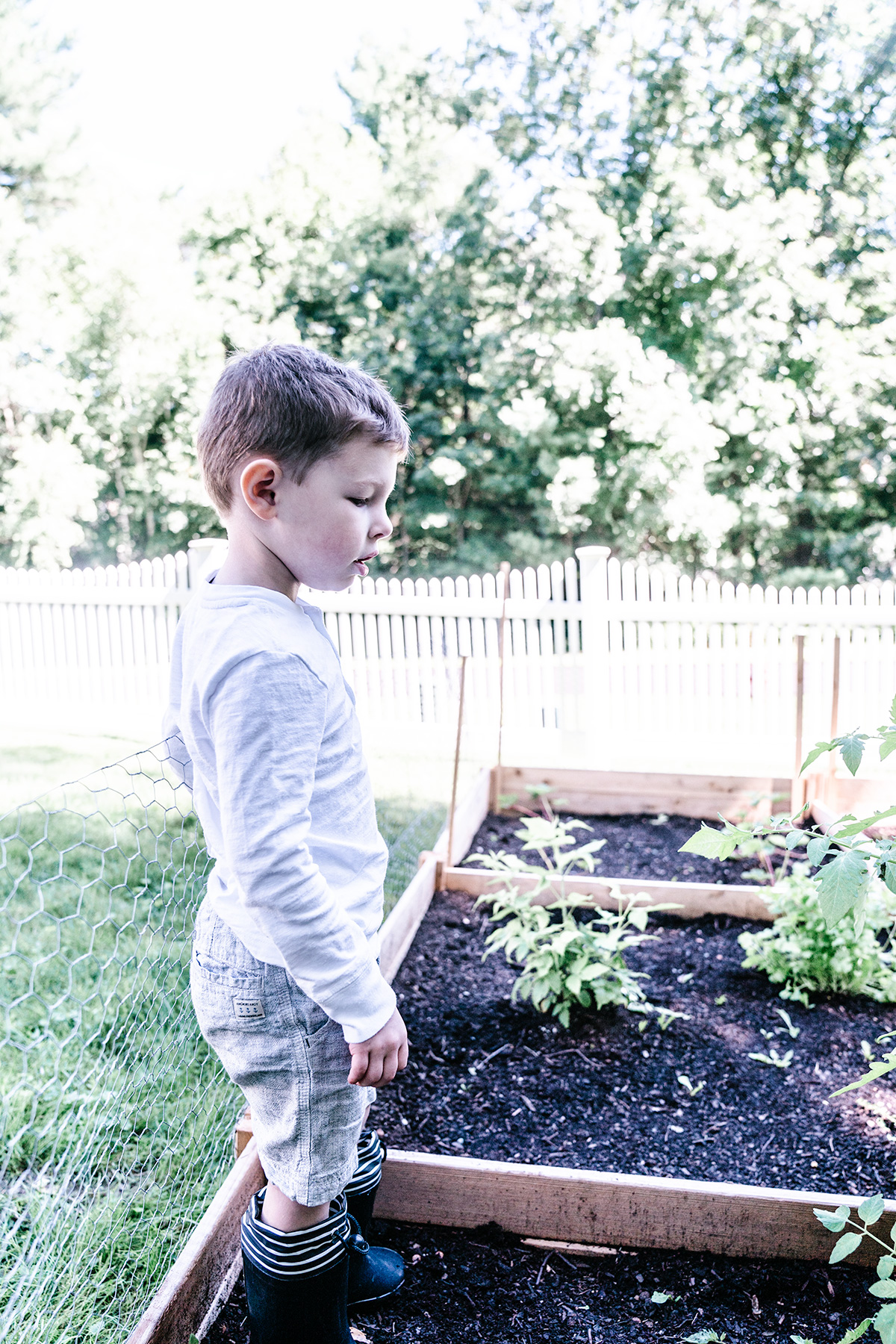
Step 3: Build Your Raised Garden Beds
Next, assemble your raised garden bed according to the package instructions. This is one step in the process that requires some physical labor and some muscle! In our most recent garden, Chris completed most of the construction with a little assistance from me (it definitely helps to have two people). When you’re working through the heavy lifting, keep in mind: this is a one time project. Next spring, your raised beds will still be there waiting and ready for planting!
How Big Should I Make the Raised Beds?
As I mentioned above, we did eight 4-foot-by-4-foot raised beds. With that amount of space we’re able to grow a good selection of fresh produce: strawberry and raspberry plants, a variety of herbs, some tomato plants, bell peppers, zucchini, cucumber, and summer squash.
We’ve also found that the beds don’t need to be very deep if you use high quality soil and compost. Our beds are only about 10 1/2 inches tall (3 cedar planks tall).

Step 4: Add Garden Soil and Compost
This is another step in the process that requires some labor and muscle. The giant bags of garden soil and compost are heavy and not easy to handle. So this is another step that Chris completed. But like the raised beds, this is also a one-weekend investment in time and labor. After an hour or so of work, you’re set for the entire garden-growing season. (And next season, you’ll likely just need just a few fresh bags, since most of the soil will last through winter.)
The formula that worked best for us: five bags of garden soil and one bag of compost for each four-by-four raised bed.
We also found that we only needed to fill each raised bed about 2/3 of the way to the top.
Step 5: Purchase Your Organic Fruit and Vegetable Plants
For your very first backyard garden, I recommend transplanting starter plants that you’ve purchased from a local garden center or nursery. I’ve learned the hard way that planting from seed requires a combo of luck and skill. I recommend starting with seeds only after you’ve gained a little gardening experience.
When you start your garden with already-growing-and-thriving plants, it doesn’t guarantee you’ll end up with a big crop of vegetables or herbs. But it definitely helps!
Where Can I Find Organic Starter Plants?
Try a Google search for “organic garden store,” and Google Maps will pull up all of the nearest garden supply stores near you. Other Google search terms to try: “organic plant nursery” and “organic garden center.” Check out store websites and/or give them a call to determine if they’re selling the types of organic vegetables and herbs that you’d like to grow. Then clear out the trunk of your car so you’ll have room for all of your starter plant purchases. Next head to the store you’ve chosen, and get some help from an employee to pick out the most fool-proof options for beginner gardeners.
To Figure Out What to Buy, Check Out:
The Easiest Plants to Grow for Beginner Gardeners
Step 6: Plant Your Organic Garden
The last step in this weekend process is to plant your garden! This is the fun and easy part. Your starter plants will likely be very small, so you’ll only need to dig small holes in order to cover the roots.
The one piece of advice I can offer here: your plants are tiny now, but some of them will one day fill an entire four-by-four raised bed!
Give your plants plenty of room to grow. We’ve found that we can fit about four herb plants (for example: thyme, rosemary, chive, and basil plants) in one four-by-four bed. We can generally fit two larger plants (such as two cucumber plants or two tomato plants) in one four-by-four bed.
Also remember to insert plant labels next to each plant so you’ll remember what’s what.
After everything is planted in that nutrient-rich soil, give the plants a light watering.
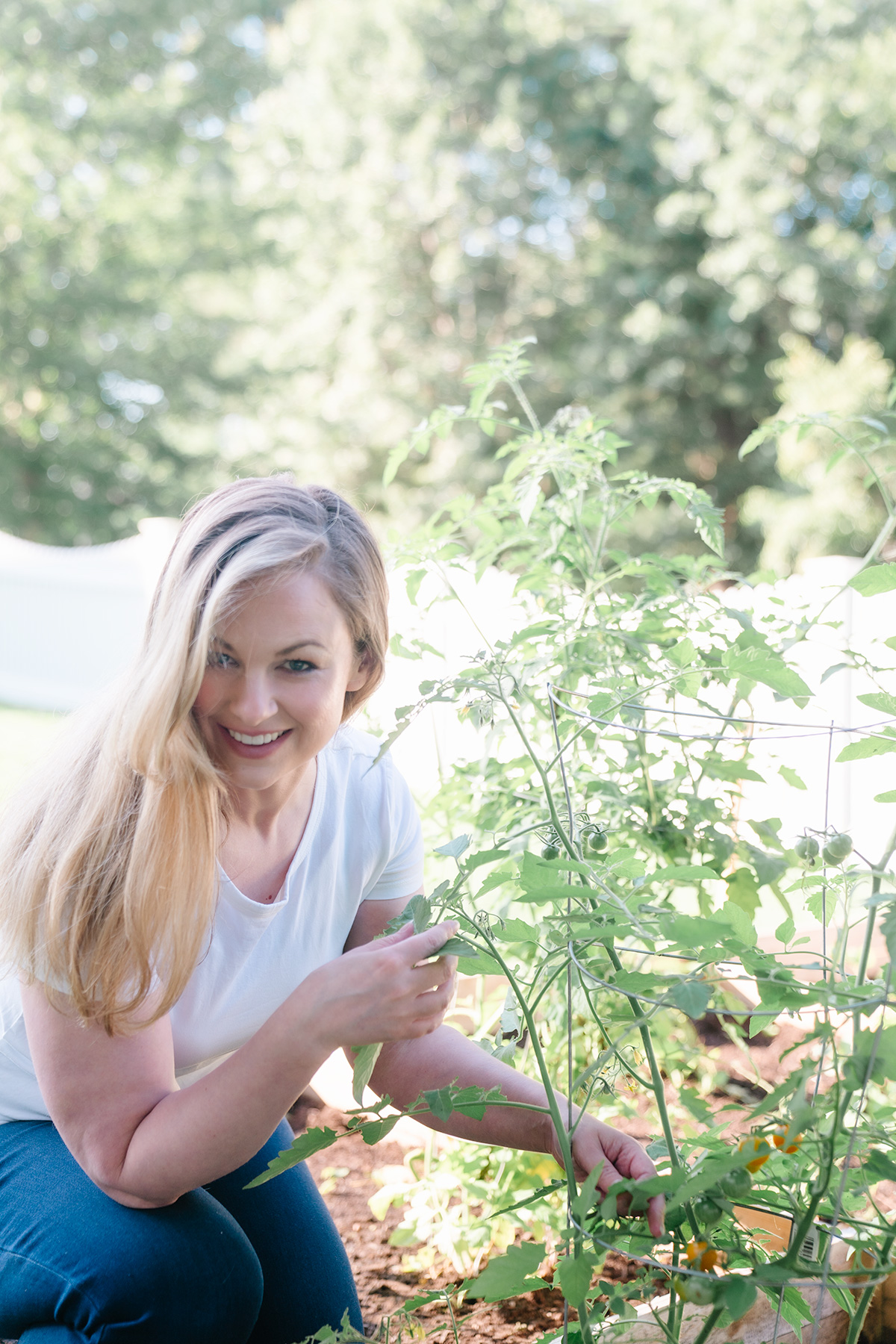
That’s it! You’ve built your organic backyard garden in one weekend.
And your reward for that weekend of work: an entire growing season of fresh-from-your-own-backyard organic veggies and herbs!
For More Backyard Garden Tips You Might Love, Check Out:
The Easiest Plants to Grow for Beginner Gardeners
Top 7 Tips For Success For Your Organic Backyard Garden
Have Kids? Here’s Why You Should Grow A Garden
Pin on Pinterest:
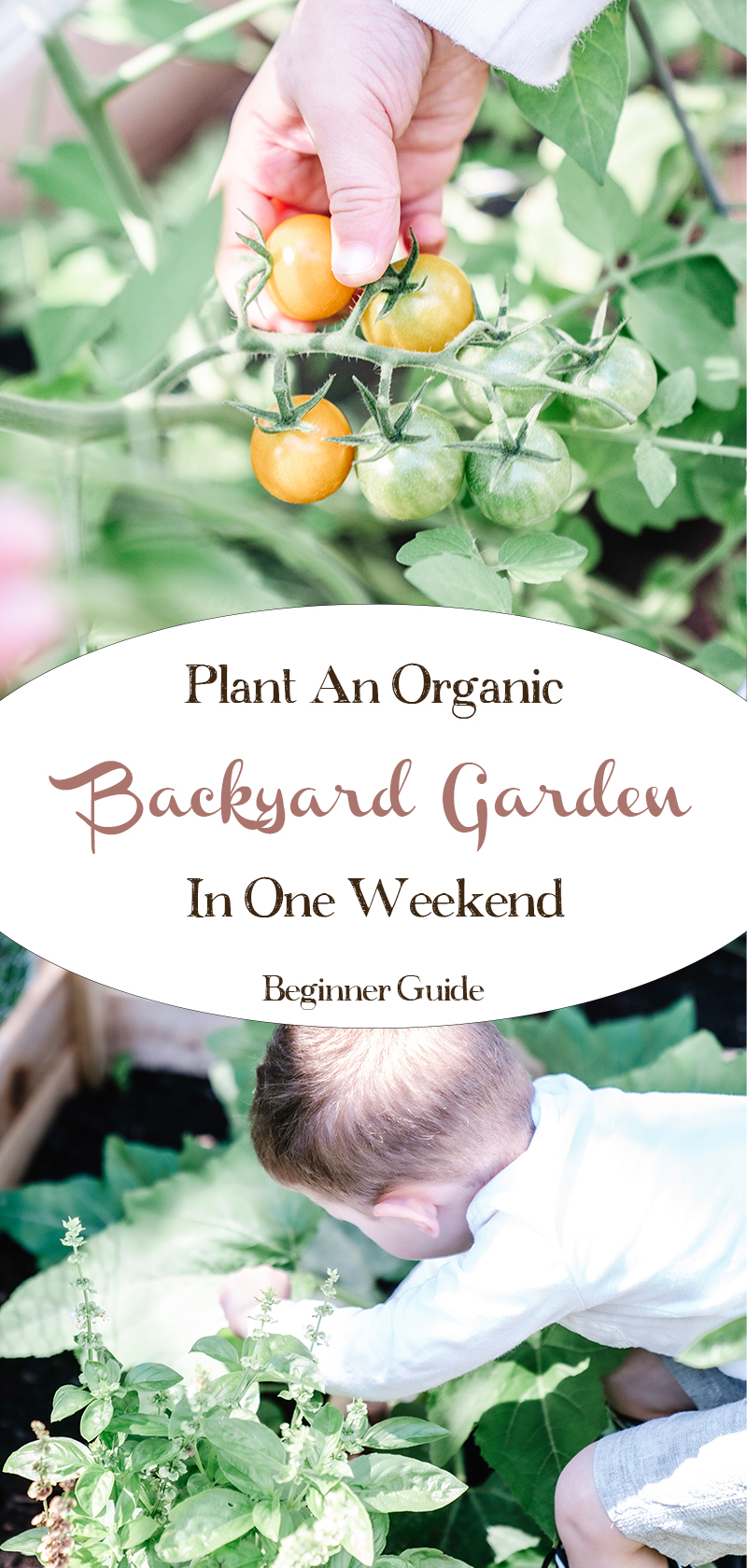
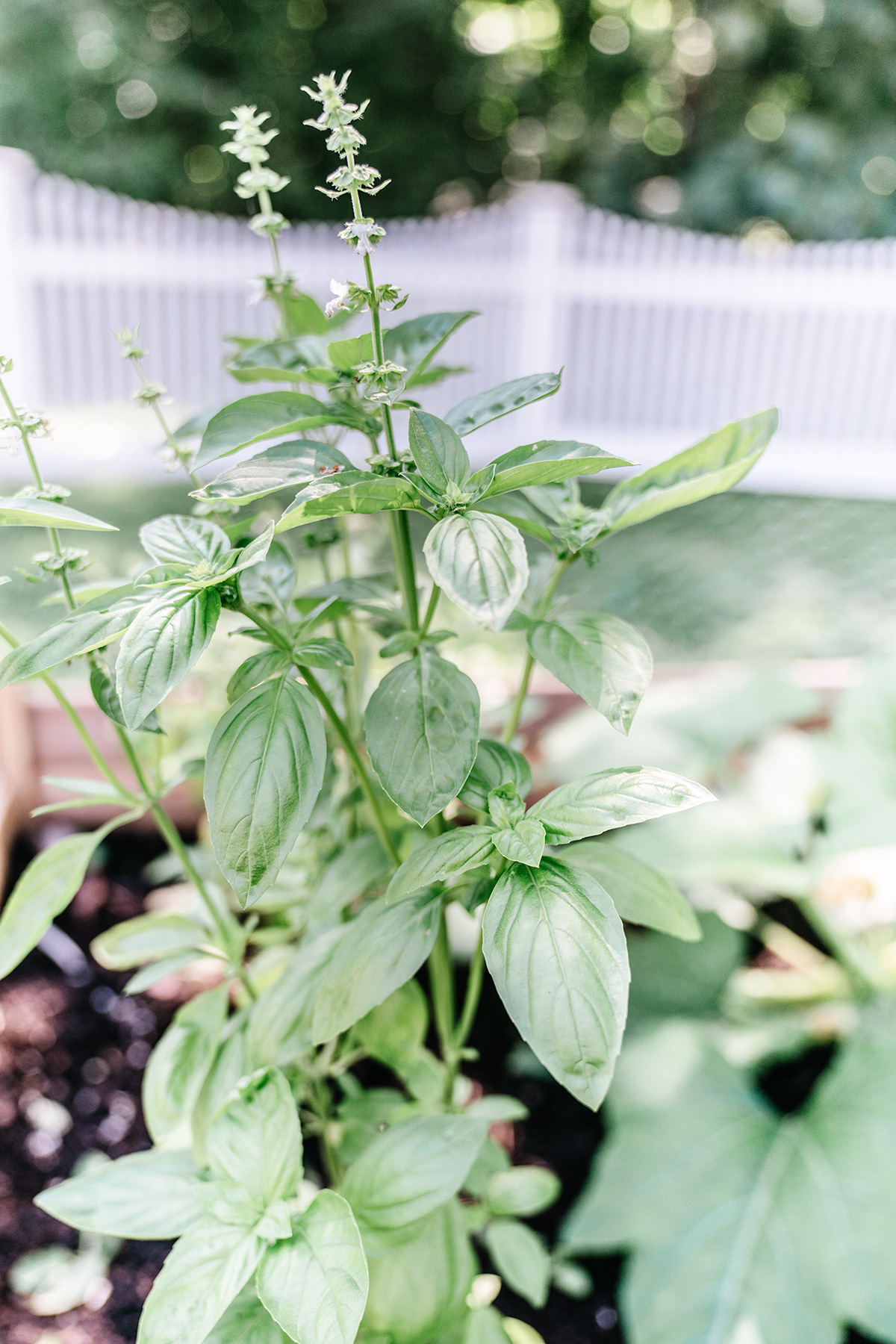
Thank you for sharing this informative guide and empowering aspiring gardeners to embark on their organic gardening journey with confidence.
I particularly appreciated your encouragement to start small and focus on a few key crops that are well-suited to beginners. Your approach of breaking down the gardening process into manageable tasks over the course of a weekend made the idea of starting a garden feel much more achievable and less daunting.